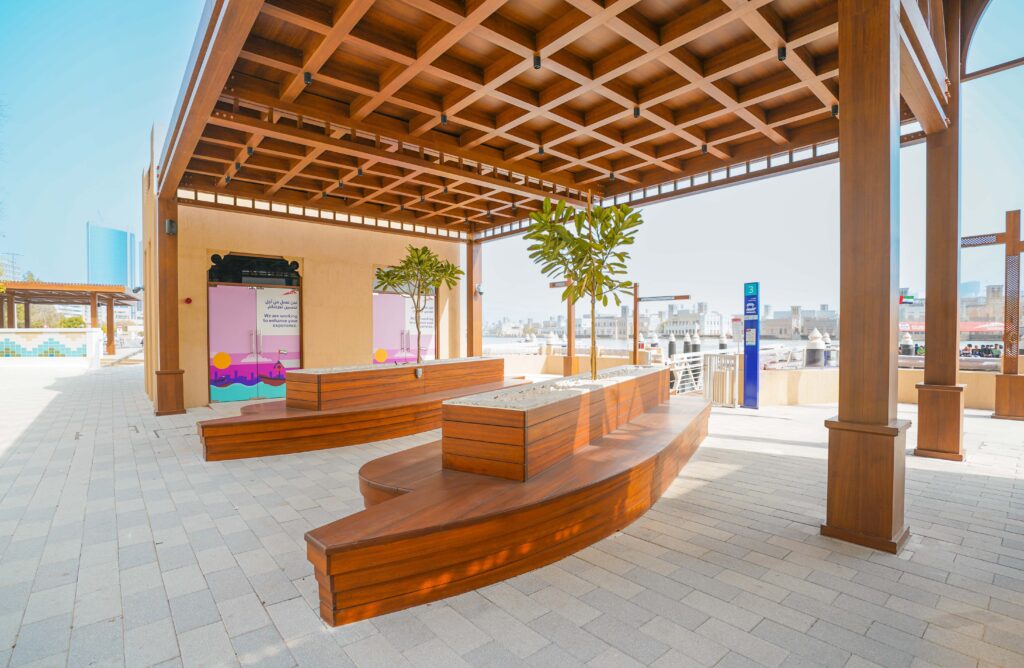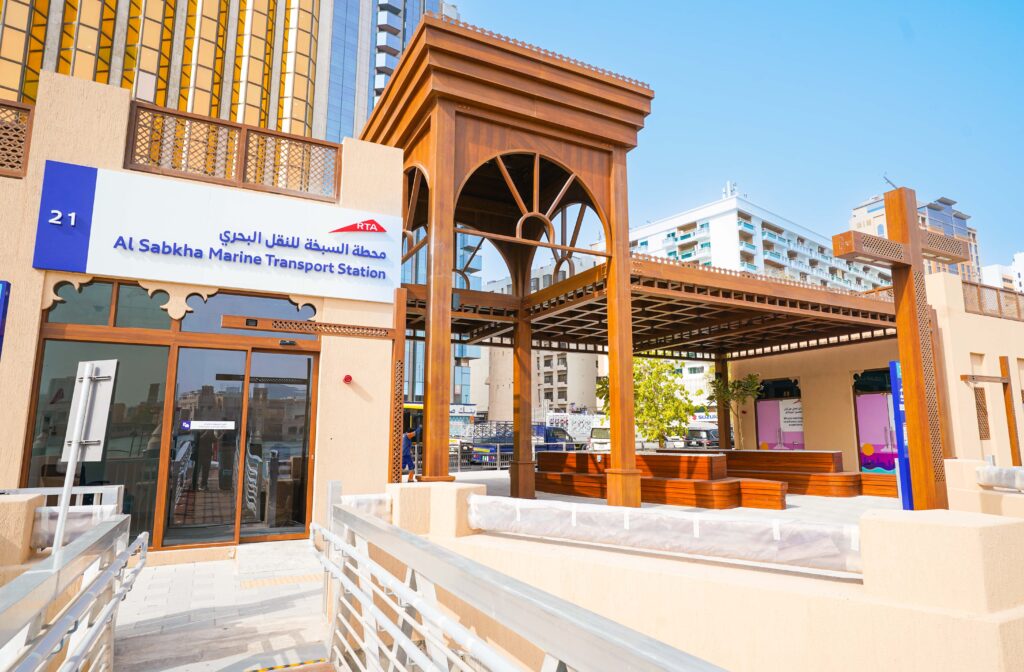Dubai’s Roads and Transport Authority (RTA) has completed the final phase of its marine transport development plan with the inauguration of the Old Dubai Souq and Al Sabkha marine transport stations. The upgrades aim to boost rider satisfaction, preserve cultural identity, and strengthen Dubai Creek’s role as a hub for sustainable mobility.
Key Upgrades for Abra Users
The new phase mirrors enhancements previously rolled out at Bur Dubai and Old Deira Souq stations, offering:
- 50% expansion of shaded waiting areas.
- Eco-friendly lighting and materials at marine berths.
- Retail outlets and investment spaces to serve riders.
- Accessibility features aligned with Dubai’s Code for People of Determination.
To improve the working environment, RTA also introduced air-conditioned rest areas for abra operators, ensuring comfort and better operational efficiency.

A Milestone in RTA’s Marine Transport Strategy
The dual-station development is part of the Marine Transport Strategic Plan 2020–2030, which envisions marine transport as a central pillar of Dubai’s mobility future. Marine transport already carried 9.7 million riders in the first half of 2025, highlighting its growing importance.
Efficient Delivery and Seamless Operations
Both stations were developed simultaneously to accelerate completion, optimise resources, and reinforce economic efficiency. During the upgrade, RTA implemented an operational continuity plan to ensure smooth abra schedules, rider safety, and uninterrupted services across Dubai Creek.

Blending Tradition With Modernity
By preserving the heritage character of Old Dubai while introducing modern facilities, RTA has ensured that the revamped stations deliver not only improved mobility but also an enhanced cultural and urban experience.
With the inauguration of Old Dubai Souq and Al Sabkha stations, RTA continues to set benchmarks in sustainable transport, passenger comfort, and urban development — reinforcing Dubai Creek’s position as a vital artery in the emirate’s transport network.












